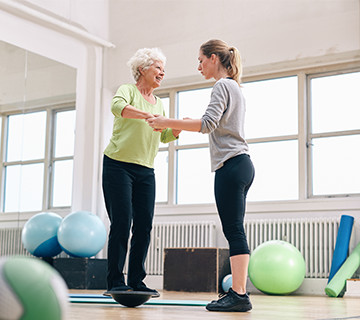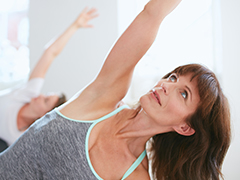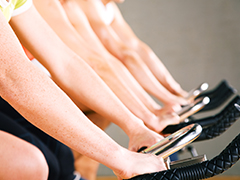Keeping Your Balance

Whenever you’re moving, even just walking out to your mailbox, your muscles are supporting your body to help avoid falls and injury. But there are a lot of factors that can affect your balance as you age, from arthritis to strokes and even just the medications you take. But the good news is, these conditions respond well to training and exercise, meaning you can begin to reverse their effects and improve your balance dramatically.
If you’re active, you’re likely already doing some of the things that can help your balance just by working out those muscles. But even if you’re not active, there are some simple programs out there that can boost balance, many of which you can accomplish at home, at your gym or at the local senior center.
Simply walking is a good place to start. It helps to strengthen the muscles in your lower body to better support your weight as it shifts. Adding cycling or climbing stairs to your routine accomplishes the same goal while putting even more emphasis on your equilibrium. The Online Health Coach can help track these activities.
Stretching, in general, loosens muscles and improves flexibility, which is an important part of balance. Yoga is a great way to stretch tight muscles and has the added benefit of strengthening core muscles, another key component to good balance. Additionally, tai chi is a fantastic low-impact exercise that puts emphasis on mindful movement. The slow twisting and limb extensions provide you with gentle challenges to make your body react the way you want it to.
Remember, balance is not something you have or don’t have. It’s a skill you can learn and practice, and the more you work on it, the better it will become.
Article source link has expired.


